
Students will create a story based on an image.
- Subject:
- Arts and Humanities
- Education
- Language Education (ESL)
- Material Type:
- Diagram/Illustration
- Lesson Plan
- Provider:
- J. Paul Getty Museum
- Provider Set:
- Getty Education
- Date Added:
- 05/27/2013

Students will create a story based on an image.
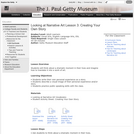
Students will think about a dramatic moment in their lives and imagine how to translate it into a work of art.

Students learn about and discuss the process of taking a photograph.
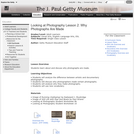
Students learn about and discuss why photographs are made.
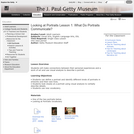
Students will make connections between their personal experiences and a work of art and use visual analysis to describe a portrait.
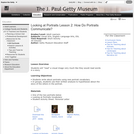
Students will "read" a visual image very much like they would read words in a story.
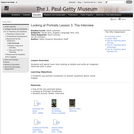
Students will spend more time looking at details and write an imagined interview with a sitter.
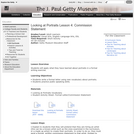
Students will apply what they have learned about portraits in a formal writing exercise.
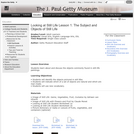
Students learn about and discuss the objects commonly found in still-life paintings.
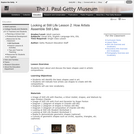
Students learn about and discuss the basic shapes used in artistic compositions.
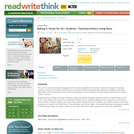
Spark the engagement of English-language learners or reluctant readers with the graphic novel "Maus". The visual information provided by the genre serves as a support for reading and critical engagement.
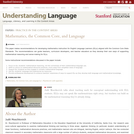
This paper makes recommendations for developing mathematics instruction for English Language Learners (ELLs) aligned with the Common Core State Standards. The recommendations can guide teachers, curriculum developers, and teacher educators as they develop their own ways of supporting mathematical reasoning and sense-making for ELLs.Some instructional recommendations discussed in the paper include: Focus on ELL students' mathematical reasoning, not the correctness of their mathematical language use. Shift to a focus on mathematical discourse practices; move away from simplified views of language. Support ELL students as they engage in complex mathematical language. Use ELL students' language and experiences as resources. Provide professional development to enhance teachers' awareness of ways to support ELs as they develop both language and mathematical knowledge.
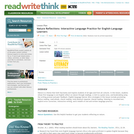
Students whose first language is not English reflect on nature through readings, a visit to a green area, and bookmaking using the writing process and peer feedback.
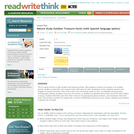
Students take a walk on the wild side when they research an animal and create a scavenger hunt activity for their classmates.
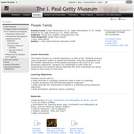
This lesson focuses on a family depicted in a work of art. Students practice using vocabulary related to people and families. Activities emphasize oral and written descriptions of the people portrayed in the work of art, using possessive adjectives. Students are challenged to infer what the relationships are between figures depicted and what individuals are doing, based on such clues as their pose.

This lesson focuses on people doing leisure activities as depicted in a work of art. Students practice using vocabulary related to people and leisure. Activities emphasize oral and written descriptions of the people portrayed in the work of art, using action verbs. Students are challenged to infer what leisure activities individuals are doing based on such clues as their pose.
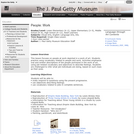
This lesson focuses on people at work depicted in a work of art. Students practice using vocabulary related to people and work. Activities emphasize oral and written descriptions of the people portrayed in the work of art, using job-related vocabulary and adjectives to describe feelings. Students are challenged to infer what job individuals are doing, based on such clues as their pose.
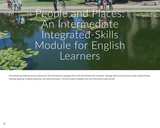
This is an intermediate integrated-skills module for English language learners. The module has three chapters on the theme "People and Places," which is equivalent to approximately 4 weeks of material for a 9 unit community college course. The module has materials to learn and practice all of the necessary language skills at the intermediate level. Academic language skills include reading, writing, listening, speaking, vocabulary, grammar, and rhetorical analysis.

This unit shows instructional approaches that are likely to help ELLs meet new standards in English Language Arts. Built around a set of famous persuasive speeches, the unit supports students in reading a range of complex texts. It invites them to write and speak in a variety of ways and for different audiences and purposes. Students engage in close reading of Abraham Lincoln's Gettysburg Address, Martin Luther King, Jr.'s I Have a Dream speech, Aristotleí˘äĺä˘s Three Appeals, Robert Kennedyí˘äĺä˘s On the Assassination of Martin Luther King, and George Wallaceí˘äĺä˘s The Civil Rights Movement: Fraud, Sham, and Hoax, Barbara Jordaní˘äĺä˘s All Together Now. The five lesson culminate with student's constructing their own persuasive texts.
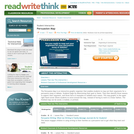
The Persuasion Map is an interactive graphic organizer that enables students to map out their arguments for a persuasive essay or debate.